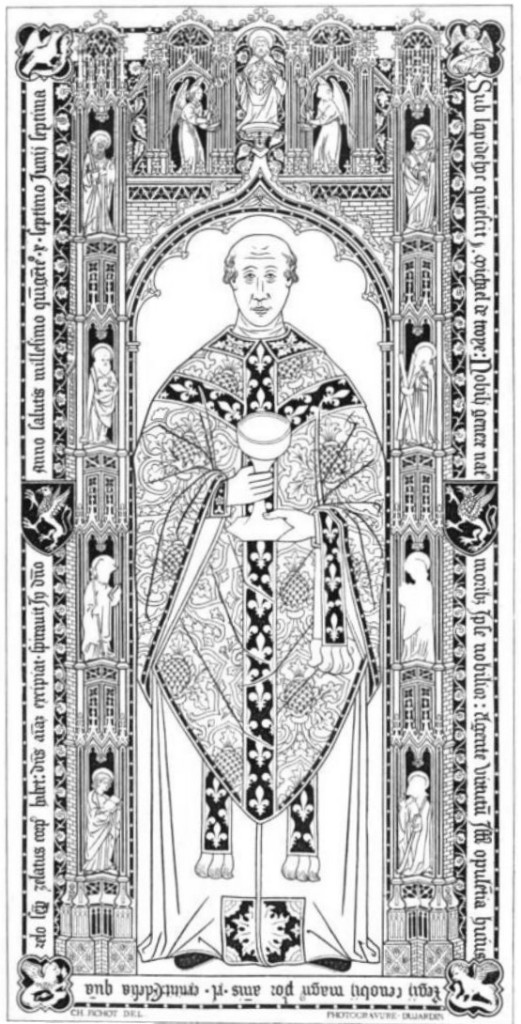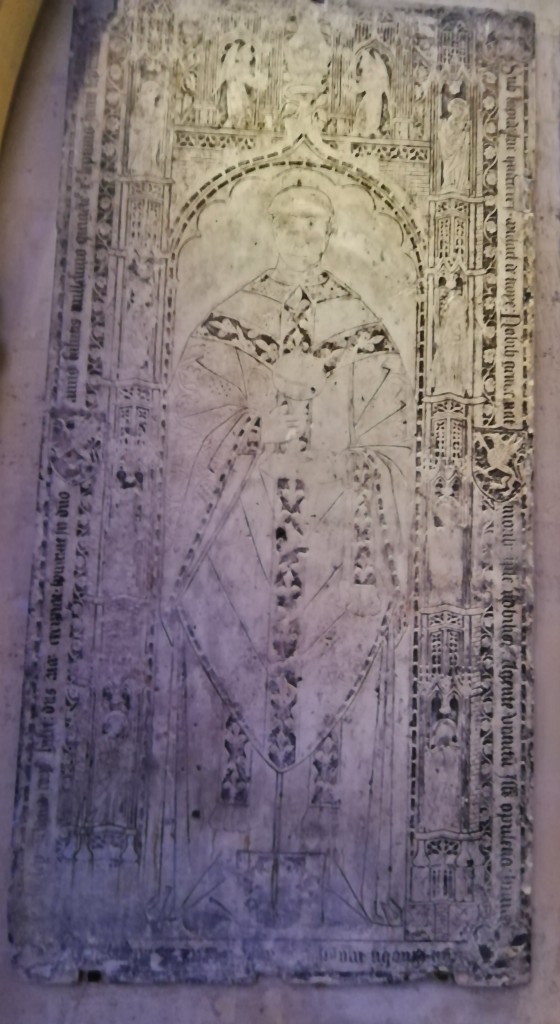Michel de Troye
- Date of Brass:
- 1517
- Place:
- Saint-Denis
- County:
- Seine-Saint-Denis
- Country:
- France
- Number:
- Style:
Description
July 2023
In 1711, François Roger de Gaignières sold his entire collection of manuscripts, portraits and printed material to the King of France. The royal genealogist Pierre de Clairambault soon began breaking up the collection, but much of it is today in the Bibliothèque Nationale de France and includes drawings of churches, funeral monuments, glass, etc.
Included in one volume are drawings of many of the monuments within the church and cloister of the abbey of Saint-Denis (now 'Saint Denis Basilica Cathedral', as the English language leaflet handed out on entrance to the eastern part of the cathedral has it). This part of the cathedral houses the necropolis of the kings of France, with a great many medieval effigies representing both those who died during the later medieval period, and those retrospective ones ordered in 1263 by Saint Louis, plus three important Renaissance tombs of the sixteenth century. In the crypt there are monuments to the later Bourbon monarchs.
Aside from the many effigies of kings, queens, princes and princesses there are other effigies depicting a few of their important subjects, not all of them originating from St Denis, and a small number of incised slabs representing the higher clergy of the abbey.
Among the drawings of incised slabs is that of Michel de Troye, grand prior of the abbey, who was in office before 1480. On 7 October 1498 he presided over the election of Antoine de la Haye as Abbot of St Denis. He died on 7 June 1517 after forty years as grand prior. His slab still survives and is on the south wall of the south transept, close to the monument of Francois I and Claude de France. The Latin inscription, as given by Histoire de l'abbaye royale de Saint-Denys en France (1706) reads:
Sub lapide hoc quiescit F. Michael de Troye, nobili genere natus, moribus ipse nobilior : agente virtutum illius opulentia, hujus /
regii cænobii Magnus-Prior annis XL extitit. Ecclesiæ quæ /
zelo semper zelatum corpus habet, Dominus animam excipiat.
Spiravit in Domino anno salutis millesimo quingentesimo x, septimo, Junii septimo.
A few of the slabs from the cathedral are now in the Musee de Cluny in central Paris, but many others disappeared at the Revolution of 1789. As the place where the kings of France were crowned, Saint-Denis was a target of the revolutionaries, despite its distance from the city. The destruction of the royal tombs at Saint-Denis was ordered in 1793, but those of historic interest were preserved and moved out of the abbey. In 1794 the roof of the abbey was also removed.
This period had a devastating effect on funerary art throughout France and the drawings made by Louis Boudan for de Gaignières are often the only representations of these monuments. Destruction in the seat of the revolution, Paris itself, meant that almost all of the city’s slabs were destroyed although the Sainte-Chapelle has a collection.
The Abbey of Saint-Denis was restored in the nineteenth century and the tombs returned, but it had lost its monastic buildings.
Good as many of the Gaignières drawings are, the smaller details can be rather sketchy. The illustration in de Guilhermy’s Inscriptions de la France du Ve siècle au XVIIIe, volume 2 (1875) shows the detail better.
Copyright Jon Bayliss (text and photo)
- © Monumental Brass Society (MBS) 2025
- Registered Charity No. 214336


